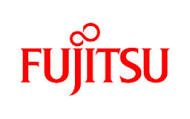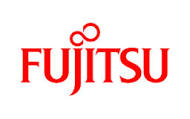Discloses fiscal 2014 results of Fujitsu Group Environmental Action Plan, Stage VII
The Fujitsu Group is disclosing the results of its efforts to achieve the targets of its Fujitsu Group Environmental Action Plan (Stage  VII), formulated to cover the three years from fiscal 2013. Among Fujitsu’s 17 target items under the plan, two, namely “Contribution to Society by ICT: Reduce Greenhouse Gas Emissions” and “Design and Deliver Eco-efficient Products,” have achieved results equivalent to their fiscal 2015 year-end targets. Accordingly, Fujitsu has revised its targets upward. In addition, in the category of “Efficient Business Operations: Data Centers,” Fujitsu has completed the building of a new PUE(1) visualization tool, which it will use to expand upon its environmental performance improvement activities.
VII), formulated to cover the three years from fiscal 2013. Among Fujitsu’s 17 target items under the plan, two, namely “Contribution to Society by ICT: Reduce Greenhouse Gas Emissions” and “Design and Deliver Eco-efficient Products,” have achieved results equivalent to their fiscal 2015 year-end targets. Accordingly, Fujitsu has revised its targets upward. In addition, in the category of “Efficient Business Operations: Data Centers,” Fujitsu has completed the building of a new PUE(1) visualization tool, which it will use to expand upon its environmental performance improvement activities.
Key Achievements in Fiscal 2014
1. Contribution to Society by ICT: Reduce Greenhouse Gas Emissions
The Fujitsu Group brings quantitative visibility to the degree to which its customers’ use of ICT contributes to a reduction in greenhouse gas emissions, and works to increase that contribution. Because solutions that have a large impact on reducing greenhouse gas emissions, such as maintenance business solutions and cloud-based electronic medical record systems, were newly included in the calculation for fiscal 2014, the reduction in greenhouse gas emissions through the provision of ICT was13.97 million tons globally in fiscal 2014, or a cumulative 24.83 million tons since fiscal 2013. Therefore, the goal, established when the plan was formulated, of 26 million tons by the end of fiscal 2015 has now been revised to 38 million tons.
2. Design and Deliver Eco-efficient Products
The Fujitsu Group’s promotion of eco-friendly design in the ICT products it offers, such as through the pursuit of the three Rs (Reduce, Reuse, Recycle) and resource conservation, serves to reduce the burden on the environment, while offering its customers the benefits of smaller, lighter, space-saving ICT products. Continuing on initiatives from fiscal 2013, Fujitsu in fiscal 2014 pushed ahead with its efforts to reduce the number of parts in newly developed products and to miniaturize products by reducing the size, thickness, and weight of parts and the space between parts. As a result, the goal for the end of fiscal 2015 of increasing new product resource efficiency(2) by 20% compared with fiscal 2011 has already been achieved, as it marked 33.6% in fiscal 2014. The goal has therefore been raised to a 35% improvement.
3. Efficient Business Operations: Data Centers
In the Fujitsu Group Environmental Action Plan (Stage VII), Fujitsu set a new goal to improve the environmental performance of its major datacenters, in keeping with the recent expansion of cloud services and the concurrent increase in datacenter energy consumption. In fiscal 2014, the Fujitsu Group built its own PUE visualization tool into its Eco-Management Dashboard(3), and commenced its operation from May 2015. With this tool, each datacenter is not only able to calculate and display its energy utilization status and PUE month by month but can also compare its level of environmental consciousness across multiple datacenters. This has led Fujitsu to expand on initiatives to improve environmental performance in fiscal 2015.
The detailed results achieved in fiscal 2014 for the Fujitsu Group Environmental Action Plan (Stage VII) are presented in the Fujitsu Group Environmental Report 2015, available on Fujitsu’s website from today.
For More Information
– Fujitsu Group Environmental Report 2015
– Fujitsu Group Environmental Action Plan (Stage VII)
– Fujitsu’s Environmental Activities
(1) PUE
Power Usage Effectiveness. A measure of datacenter power efficiency. It is the ratio of the total amount of energy used by the datacenter to the amount used by its ICT equipment. Lower values indicate low power usage by non-ICT equipment, indicating a power efficient datacenter.
(2) Resource Efficiency
A unique measure calculated by Fujitsu, with the environmental burden created by the use and disposal of the materials (resources) making up a product as the denominator, and the value of the product as the numerator.
(3) Eco-Management Dashboard
A platform system that aggregates a wide variety of environmental information and management information to bring about overall optimization of production and management. The Fujitsu Group makes the know-how it has gained from its internal initiatives available in its Fujitsu Sustainability Solution Eco-Management Dashboard.


